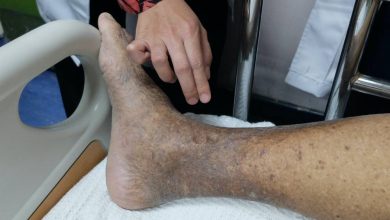Fibromuscular Dysplasia Symptoms, Causes, Diagnosis and Treatment

What is fibromuscular dysplasia?
It is a disorder which tends to cause enlargement and narrowing of your medium-sized arteries. Moreover, bulging and narrowing occur within the same area, whilst causes narrowing of artery to such an extent that organs those get blood from your artery become damaged. Furthermore, fibromuscular dysplasia may lead many complications in the long run for example dissection and high blood pressure if it is left untreated. The condition mostly affects the arteries those lead to your kidneys. However, it can also strike the arteries that lead to the legs, arms, abdomen and brain. Clearly, there is no cure for the disease, yet can be effectively treated.
What are the symptoms of fibromuscular dysplasia?
Usually, individuals with fibromuscular dysplasia have no signs at all; however possibilities are that one may experience few of its symptoms merely depending upon the artery which is affected by the disease.
- Kidney symptoms: in case renal arteries-arteries that lead to the kidneys, are affected, one can experience:
- High blood pressure.
- Ischemic renal atrophy.
- Rarely, chronic kidney failure.
- Brain symptoms: in case carotid arteries- arteries that lead to the brain, are affected, one can experience:
- Facial numbness or weakness.
- Chronic headache.
- Neck pain.
- Tinnitus.
- Temporary loss or blurred vision.
- Dizziness.
- Headache.
Abdominal symptoms:
In case mesenteric arteries-arteries that lead to the abdomen are affected, one can experience:
- Considerable weight loss.
- Abdominal pain soon after consuming food.
Leg or arm symptoms:
In case peripheral arteries-arteries that lead to the legs or arms are affected, one can experience:
- Cold limbs.
- Discomfort when moving the feet, hands, legs or arms.
- Weakness.
- Numbness.
- Skin changes in appearance or color.
What causes fibromuscular dysplasia?
What exactly causes the disease, is unknown till date, however certain factors are considered in playing a crucial role:
- Hormones.
- Genetics.
- Abnormally formed arteries.
What are the risk factors of fibromuscular dysplasia?
Even though, its cause is unknown, yet some factors are considered for increasing the chances of fibromuscular such as:
- Age: more commonly observed in people below 50.
- Sex: more common in women as compared to men.
- Smoking: it is observed that individuals those have smoking habits are more commonly diagnosed with fibromuscular dysplasia.
What are the possible complications of fibromuscular dysplasia?
The disorder can cause the following complications:
- Dissected artery.
- Chronic kidney failure.
- Stroke.
- Aneurysms.
- High blood pressure.
How is fibromuscular dysplasia diagnosed?
In order to diagnose the disorder, the doctor can recommend the following tests:
- Doppler ultrasound.
- Catheter-based angiography.
- CT angiogram.
- MRI.
How is fibromuscular dysplasia treated?
Its treatment depends upon:
- Causal conditions the patient is suffering from for example high blood pressure.
- Narrowed artery location.
- Patient’s health.
More specifically, its treatment options tend to include medications, surgery and medical procedures.
Prevention:
Unfortunately, it is not preventable. Yet, in case you smoke; quitting it can minimize the possibilities of developing the disease.
By : Natural Health News




